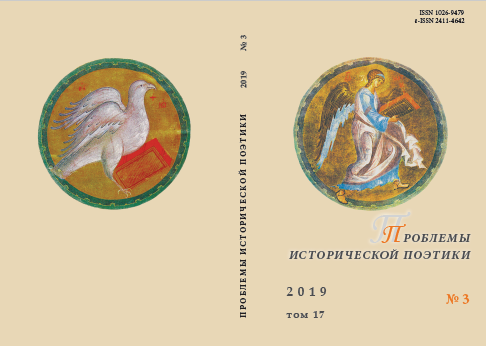Истоки и эволюция «теории русского лада» Алексея Ремизова (1900–1920-е гг.)
Origins and Evolution of the “Theory of a Core Mode of the Russian Literary Style” by Alexei Remizov (1900s–1920s)
Author(s): Alla GrachevaSubject(s): Aesthetics, Pre-WW I & WW I (1900 -1919), Interwar Period (1920 - 1939), Theory of Literature
Published by: Петрозаводский государственный университет
Keywords: Alexei Remizov; “teoriya russkogo lada”; style; prose of the twentieth century;
Summary/Abstract: The article studies the initial stages (1900s–1920s) of the formation of one of the basic categories of artistic thinking of Alexei Remizov, the “theory of a Core Mode of the Russian literary style” (“teoriya russkogo lada”) thought up by him. Since the late 1900s the writer began to incorporate into his author language the antique linguistic layers. In the 1910s Remizov put into practice an aesthetic principle that he discovered: the writer is a “retransmitter” of the voices of the people kept in folklore, in ancient Russian literature and ego documents. During the Second Russian revolution in his creative practice and theoretical articles Remizov again raised the question of the language of modern verbal art. The basis of the style was to be the author’s language as a synthesis of literary and oral speech. At the same time, Remizov began to build a historical typology of the development of a literary line related to it.
Journal: Проблемы исторической поэтики
- Issue Year: 17/2019
- Issue No: 3
- Page Range: 232-257
- Page Count: 26
- Language: Russian

